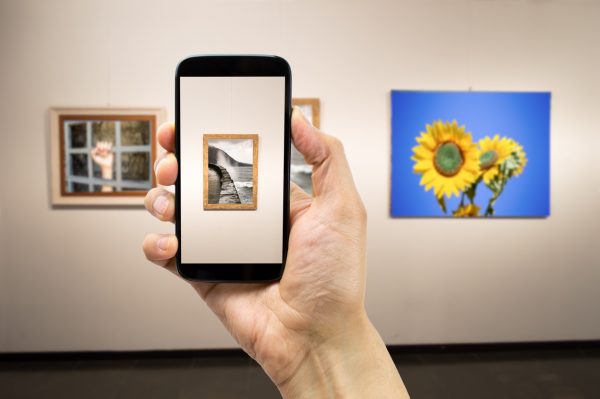Whether for a grant, a residency or an exhibition opportunity, open calls can serve as excellent prompts that give structure and deadlines to an otherwise self-directed work schedule. What’s more, these opportunities open up possibilities of exposure, networking and access to important resources (from prize money to mentorship), or simply the time and platform to carry a project through to completion. So how can you maximise your chances of success? We provide our top tips on how to write artist applications for open calls, opportunities and competitions.

Where to find opportunities?
The first step in any application process is finding the opportunities themselves. Whilst local newspapers, noticeboards, word of mouth and online research are all perfectly viable, newsletters are by far the most efficient. Subscribing to artist bulletins like ArtWeb’s monthly newsletter can cut your search time in half as you’ll receive curated lists of new opportunities straight to your inbox.
Make a plan
Forward planning is both time and cost effective. Applications can be time consuming, so it’s important to be selective in the ones you apply for. At the start of each month, set aside a full day dedicated to seeking relevant opportunities. Make a list, before picking a handful of the most suitable, and plot them out in your calendar. This allows you time to factor in your other responsibilities and busy working periods. You should aim for no more than three a month — it’s better to submit two well-considered applications than twenty slap-dash efforts.
- Dedicate one day per month to sourcing opportunities.
- Be selective: choose one to three opportunities per month.
- Plot deadlines out in a calendar to avoid schedule clashes.
Research
An obvious rule of thumb, though often overlooked, is to read all the conditions before you apply. Be aware of the qualifying factors (i.e., Does this opportunity have an age limit? Is it targeted exclusively at students?) Don’t waste your time, or the judges, by applying for something that you are ineligible for. When calculating if an opportunity is right for you, and thereby worth applying for, there are multiple factors to consider.
Firstly, you may want to look at the panel of judges and the winners of previous years. If they are all figurative painters, and your work is predominantly abstract sculpture, you may be more successful elsewhere. You could also research the funder to make sure your submission is matched to their interests and needs.
Next, calculate the costs involved, not just the entry fee but that of travel, storage or framing solutions your application may incur. Does the potential gain outweigh the financial hit? (Note: Generally, the most reputable organisations offering artist opportunities do not require an entry fee.)
Finally, don’t be afraid to ask questions! If you have any doubts about the specifications, don’t hesitate to send the organisers a polite email asking for clarification, but make sure you do so well before the deadline.
- Read the conditions carefully.
- Look at the panel of selectors and the work of previous winners and shortlisted entries.
- Consider the overall pros/cons.
- Don’t be afraid to ask questions.
Putting pen to paper

As always, avoid jargon. Write in clear, direct sentences that can be understood easily. Good writing should not require a PhD in order to decipher the message. With any application, there are six words to keep in mind: Who, what, why, where, when and how. Specifically:
- Who are you, and how are you suitable for this opportunity?
- What is your work about?
- Why are you proposing this particular project?
- Where will it take place?
- When are your deadlines for each part of the project (research, studio, installation, presentation)?
- How will you achieve this and how will it contribute to your wider artistic and professional goals?
Make sure these questions are covered in the body of your answers. I find it particularly useful to approach the first draft as freely as possible, editing it down with a critical eye after that fact. As Hemmingway famously said, “The only kind of writing is rewriting.” When you’re happy with the application, ask a friend to look over it, and have them summarise your proposal to ensure it is easily understood.
- Avoid jargon.
- Edit, edit, edit!
- Ask for feedback.
Submit clear and considered images

Even the most eloquent applications must be backed up with high-quality images. After all, these are opportunities for visual artists! Consider the format specifications, as well as the scale and medium of accepted work, and submit images per the requirements. Choose the pieces that are best suited to the brief, and photograph your work in a room with plenty of natural light, with a good-quality smartphone or DSLR camera. 2D work should be mounted on a wall and photographed head-on, whilst a plinth is ideal for 3D work, ensuring a plain background. Remember, judges have to delve through hundreds of images, so make sure yours stands out for all the right reasons.
- Submit high-quality images.
- Choose work that suits the brief.
- Aim for natural light, straight angles and neutral backgrounds.
What next?
The selection process can vary from a couple of weeks to a few months. You’ll usually be given a timeframe of when to expect the results, so be patient, and email for an update only if the panel has substantially exceeded their preliminary timeframe. If you are selected, congratulations! But don’t fret if you miss out—the application game is a law of averages, and rejection is part of even the most illustrious art careers. The writing process is a valuable opportunity in itself, allowing you to clarify and reflect on your aims. What’s more, you’re enabling your work to be seen by individuals you may not otherwise have access to. A number of artists have been discovered through open call submission processes; could you be next?







